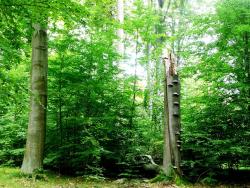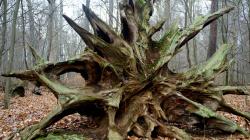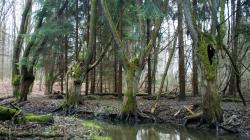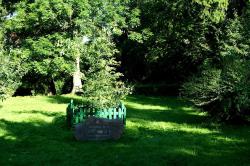
Nature reserves
Landscape-nature protected complexes
Nature parks
Natura 2000 Areas
Natural monuments

Areas of protected ecology
Species protection
 Asset Publisher
Asset Publisher
 Asset Publisher
Asset Publisher
Tourist Attractions
Tourist Attractions
 Rezerwat przyrody "Annabrzeskie Wąwozy". Fot. Jerzy Wilanowski
Rezerwat przyrody "Annabrzeskie Wąwozy". Fot. Jerzy Wilanowski
 Lasy Nadleśnictwa Szprotawa. Fot. Sebastian Zapolski
Lasy Nadleśnictwa Szprotawa. Fot. Sebastian Zapolski
 Lasy Nadleśnictwa Szprotawa. Fot. Sebastian Zapolski
Lasy Nadleśnictwa Szprotawa. Fot. Sebastian Zapolski
 Lasy Nadleśnictwa Szprotawa. Fot. Sebastian Zapolski
Lasy Nadleśnictwa Szprotawa. Fot. Sebastian Zapolski
 Tablica informacyjna przy dębie "Chrobry"
Tablica informacyjna przy dębie "Chrobry"
 Jeden z Dębów "Papieskich". Fot. Jerzy Wilanoski
Jeden z Dębów "Papieskich". Fot. Jerzy Wilanoski
Nature reserves being sanctuaries for many protected plant and animal species, a 750-year-old natural monument (the oldest tree in Poland) or various forms of wildlife conservation that will amaze any nature lover – these are only some of the natural attractions that can be admired in the forests of Szprotawa Forest District.
750-year-old Pedunculate Oak named "Chrobry" is an exceptional specimen of the species on national scale.This unique natural monument grows in the Lower Silesian Wilderness, in the vicinity of "Buczyna Szprotawska" Nature Reserve, close to the village of Piotrowice and surprises the visitors with its massive size.
"Buczyna Szprotawska" Nature Reserve being habitat for an extremely rare species, Edible Dormouse, is a must see as it is the largest reserve managed by Regional Directorate of the State Forests in Zielona Góra.
Other places of interest include:
- "Annabrzeskie Wąwozy" Nature Reserve,
- "Park Słowiański" Landscape-Nature Protected Complex,
- Bóbr Valley, Dalkowskie Hills, Brzeźnica Valley, Szprotawka Valley and the Lower Silesian Wilderness – all qualified as nature parks,
- Lower Kwisa Valley, Szprotawsko-Piotrowicka Beech Wood, Borowina (Peloid), Małomickie Riparian Forests, Przemkowskie Ponds and the Lower Silesian Wilderness – all of them included in the network of "Natura 2000" Protected Areas,
- as well as areas of protected ecology, such as Owl's Bog, Crane's Bog, and Swan Ponds.
Szprotawa Forest District can boast an excellent network of bicycle trails.
Szprotawa Forest District also includes a network of walking trails designed by PTTK (Polish Tourist and Sightseeing Society) in Żary that combines natural and historic attractions of the area in a tourist-friendly form.





![„Naplotkowała sosna, że już się zbliża wiosna.[…] A wiosna przyszło pieszo - Już kwiaty z nią się śpieszą, Już trawy przed nią rosną I szumią: „Witaj wiosno!”. Jan Brzechwa - Przyjście Wiosny](/documents/1226291/0/Wiosna+1.jpg/8e6d02a0-5ffe-d486-49c3-5fac2b3b23c1?t=1711109156614&width=42)


